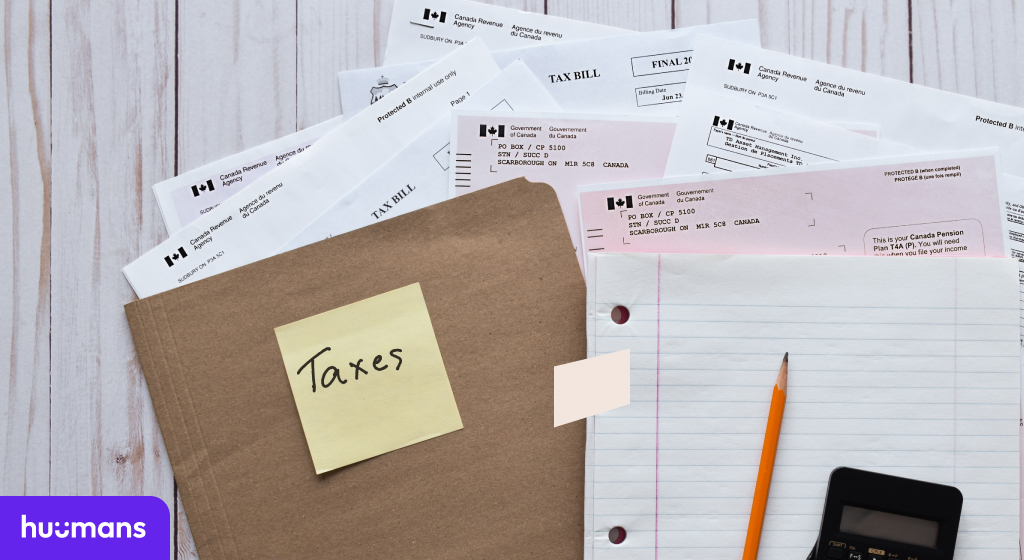

The difference between payroll taxes and income taxes is a matter of context. Collectively, they both fall under the umbrella of payroll taxes (source deductions). Payroll taxes are dollar amounts that are either taken out or added to a paycheque, depending on the tax itself and the rules that apply to the specific tax. Here’s a quick breakdown of payroll taxes and income taxes.
The main Canadian payroll taxes, also known as source deductions, include:
For a full overview of payroll taxes and how they work, check out this article.
While CPP/QPP and EI are very specific federal social assistance programs, federal and provincial/territorial income taxes cover things like healthcare, schools, roads, and more.
There’s actually a bit of a lifecycle for payroll taxes that starts from the moment you hire an employee.
Report and forward payroll and income tax amounts to the Canada Revenue Agency (CRA) or Revenu Québec (RQ).
Provide each employee with an accurate T4 that includes all of the CPP/QPP, EI and income tax amounts from the previous year.
Payroll records can be either physical paper records or electronic files.
You guessed it: This happens every year at tax time.
First, we can break down topics like this. But we’ve also got Huumans Payroll, a tool that takes care of your payroll and income tax responsibilities as part of automating and streamlining payroll for you. Learn more and find out how you can pay up to five employees for free for the first year.
For more on small business payroll, see these resources:
Yes. The most common payroll taxes include CPP/QPP, EI, and income tax. In Canada, you also need to account for both federal and provincial/territorial income tax.
Use CRA tables, the Payroll Deductions Online Calculator (PDOC), or payroll software, like Huumans. Automating manual calculations saves you time and helps prevent mistakes.
Late or incorrect remittances can lead to penalties and interest charges. Mistakes on paycheques also cause stress for both you and your employees. At the end of the year, payroll tax amounts are reported via mandatory T4s, T4As, and RL-1s.
At Huumans, we want to be helpful and accurate, but we also want to be upfront. This blog helps you make sense of payroll — it doesn’t replace your accountant, bookkeeper, or lawyer. We do our best to keep things accurate, but if you catch something off, let us know and we’ll fix it. And if we link to other sites, that’s just us sharing resources — what they say is on them, not us.